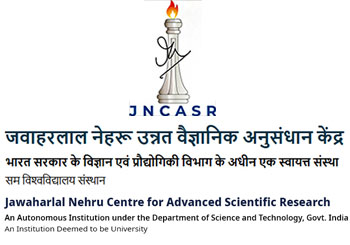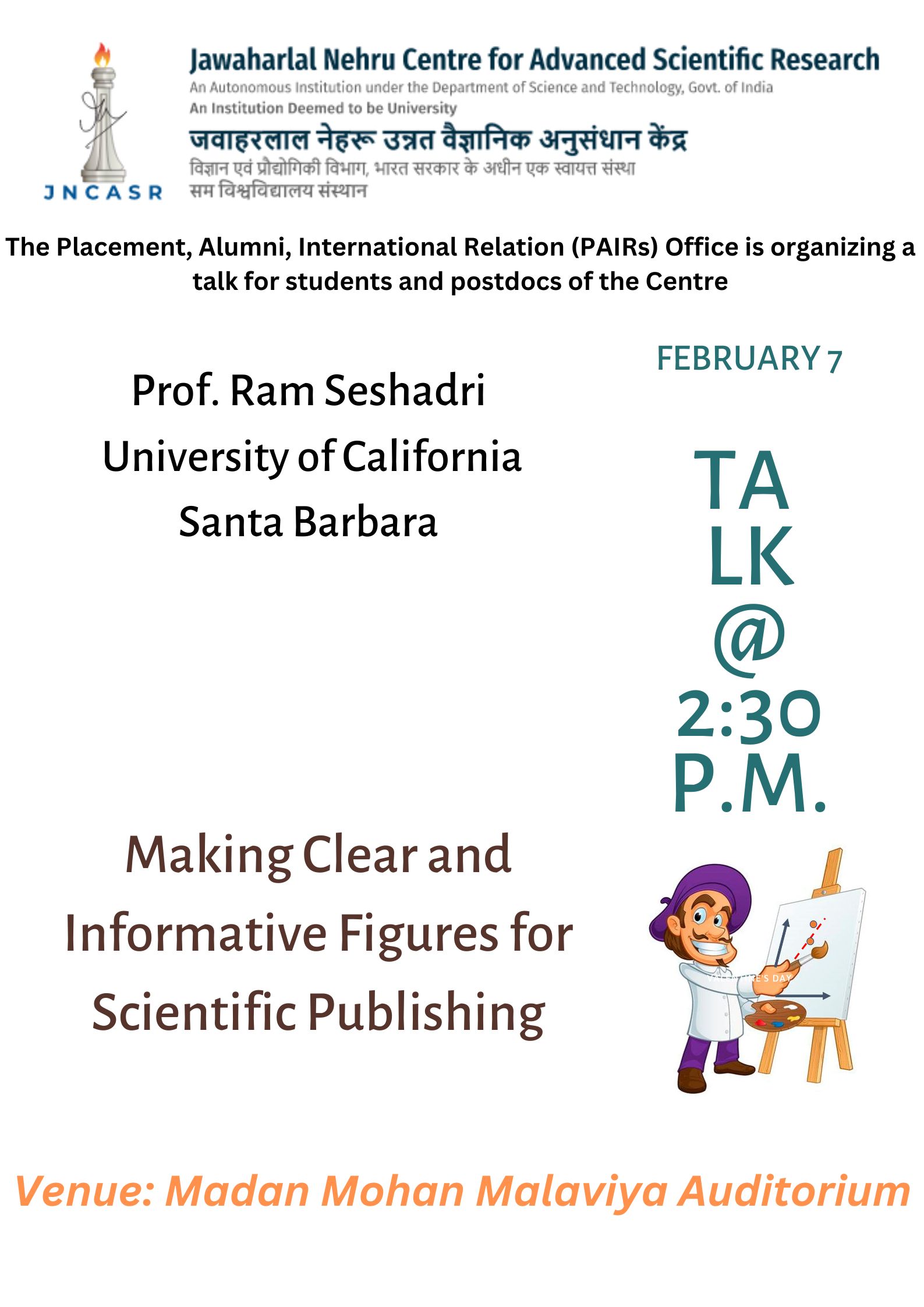Other Drives/Programmes
Primary tabs
On Friday 28th April 2023, Prof G.U. Kulkarni, President JNCASR inaugurated a new facility at Jakkur campus which provides improved amenities to contractual staff members working under Housekeeping Horticulture and for those engaged through outsource agencies. This facility includes improved drinking water facility, place for recreation, restrooms, changing room etc for these employees.
Administrative Officer along with other officers and staff members attended this event.
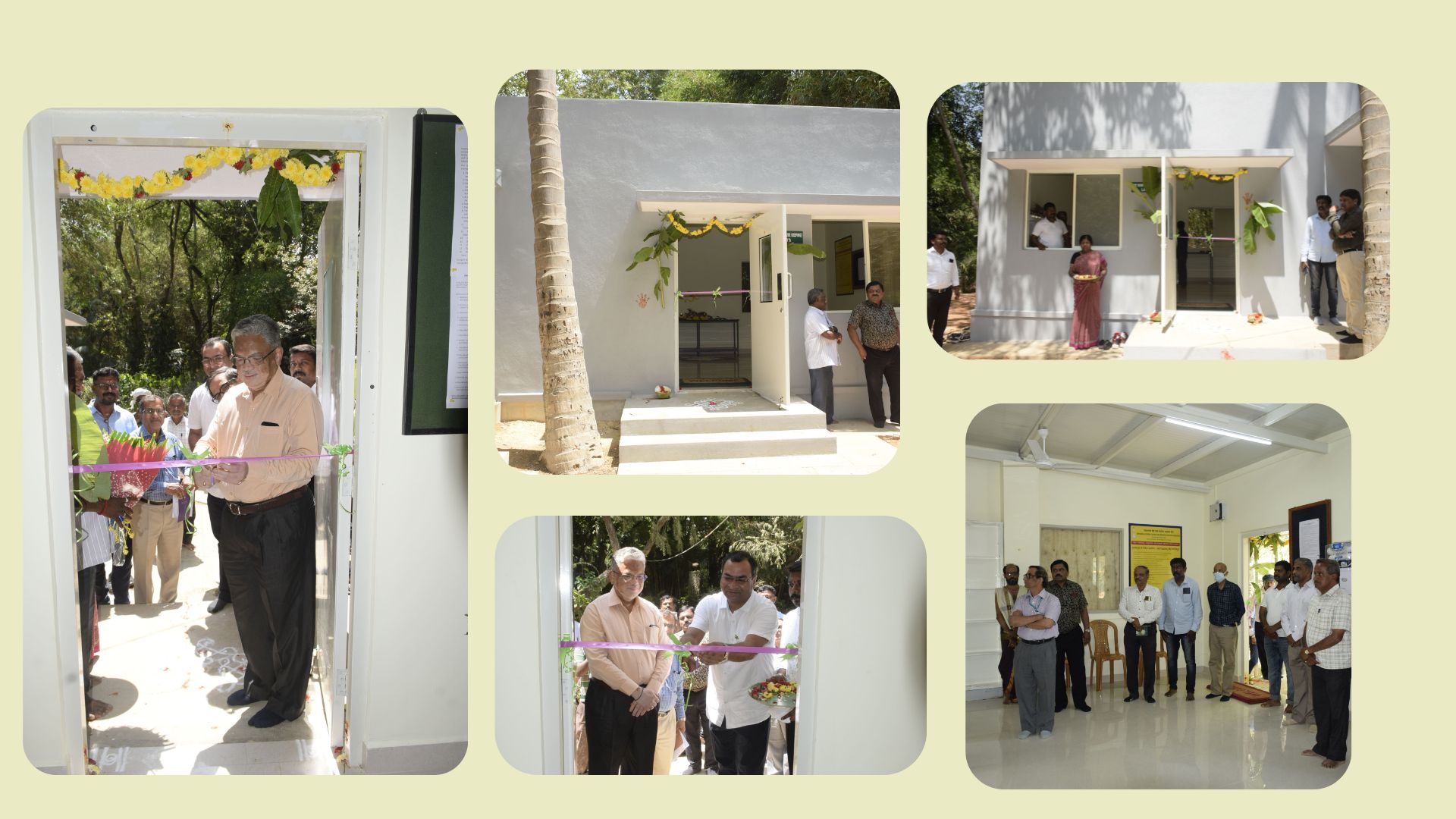
Title: Towards simulating fluid flows on quantum computers
The month-long sports celebration - Khel Utsav 2023 began atJNCASR on 17 April 2023 with great enthusiasm and cheers of JNCASR community!
Lined up with exciting sports viz football, volleyball, cricket many more. The event was inaugurated by Prof. G.U. Kulkarni President, JNCASR.
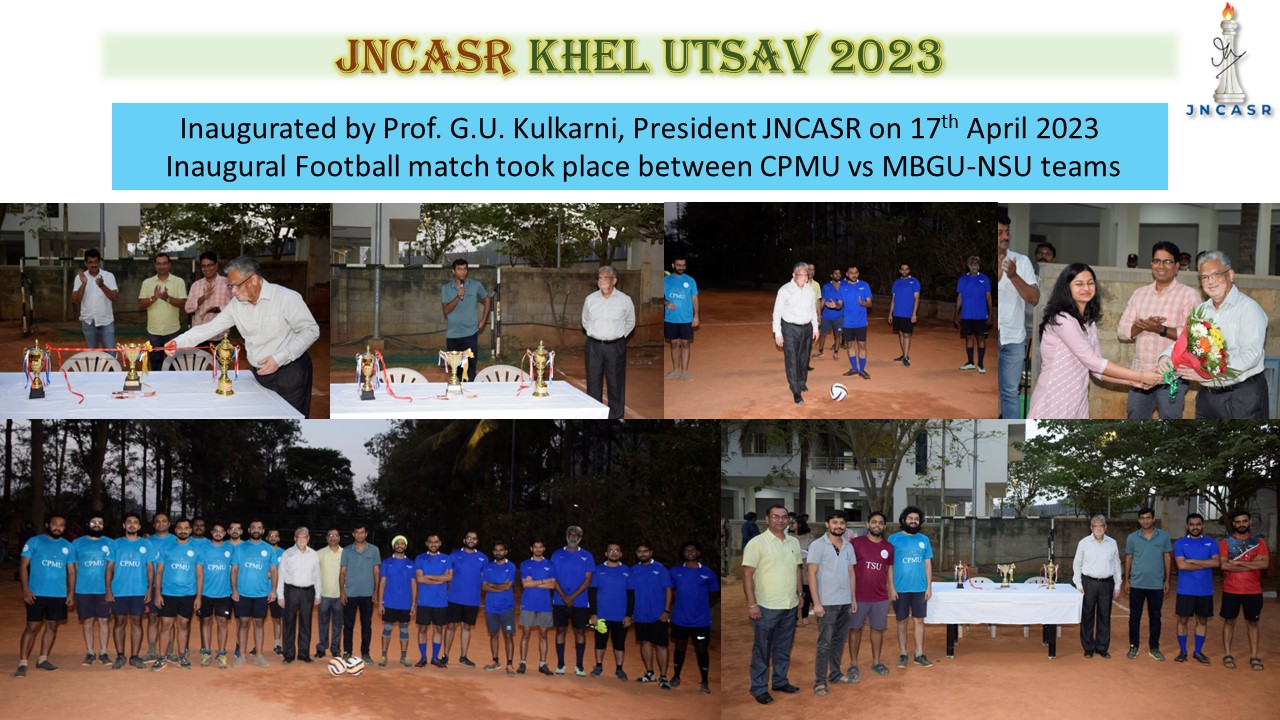
On the occasion of International Women’s Day, a five km Run was organized by JNCASR to celebrate the Annual Marathon on 5th March 2023. More than hundred members of the JNCASR community including Students, Professors, and Staff members participated enthusiastically in this mini marathon and everyone successfully completed the run.
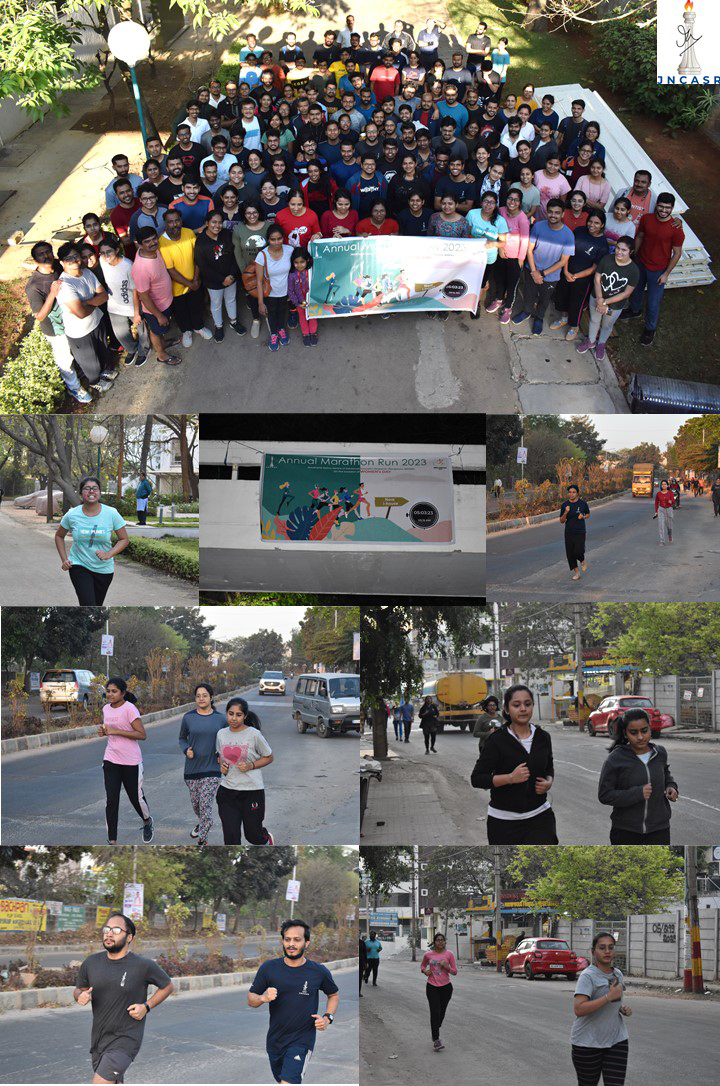 ,
,
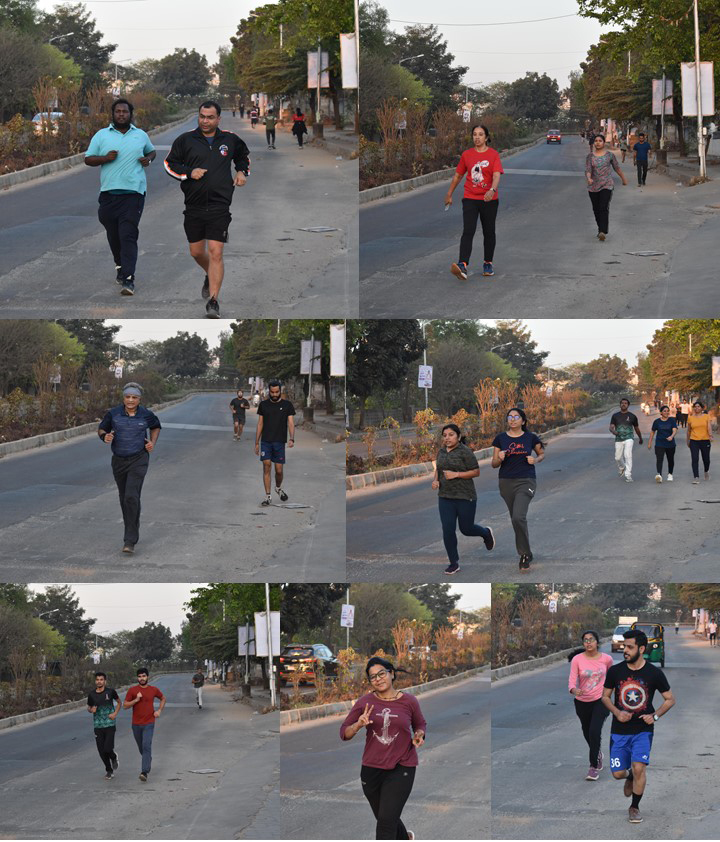 ,
,
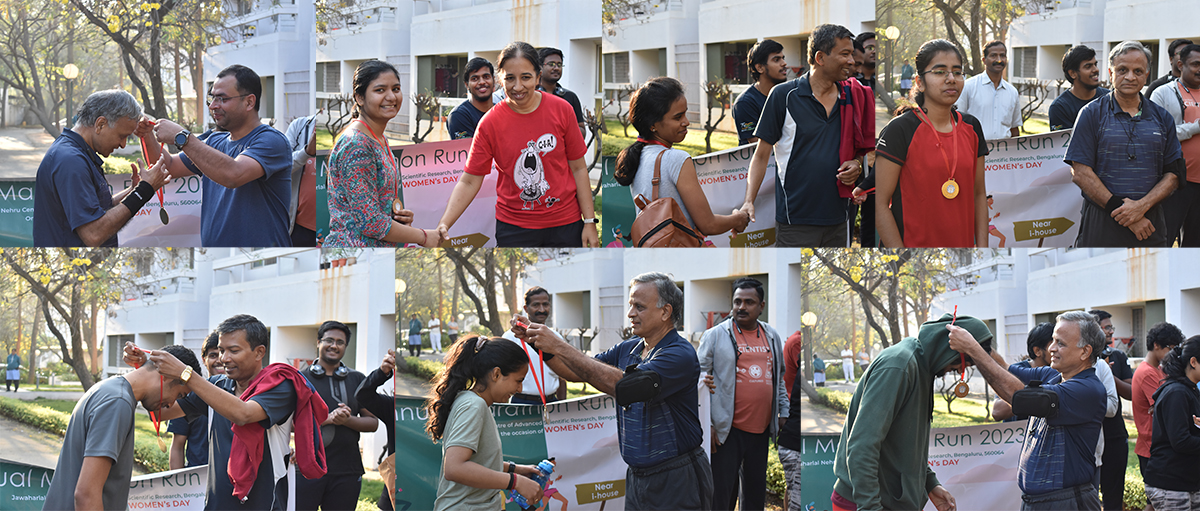
TSU EMU COLLOQUIUM
Speaker:Dr.S Ganga Prasath
Affiliation:Post Doctoral Fellow, Harvard University, USA
Title:Developing adaptable systems using patterns
Date and Time: 01 March 2023 (Wednesday) at 03:15 pm(Tea/Coffee: 03:00 pm)
Venue:AMRL Conference Hall, JNCASR [Hybrid Mode]
Abstract:
In this talk we will discuss two instances of systems that adapt to local changes in their environment thus providing it with particular function. In the first part we briefly describe how elastic materials deform under external or internal body forces and result in instabilities that dramatically modify their morphology. We will then see the mechanism behind a new class of geometric materials that bypasses these instabilities and the role of softness in determining their properties for shape morphing applications. In the second part we will discuss ways by which patterns in natural systems can inspire robotic systems for a particular function and examine a particular instance of collective task execution in ants. We will then look at a possible generalized approach to design robotic systems with robustness that leverages the pattern formation paradigm.
Host: Prof. Subir Das Prof. Santosh Ansumali
TSU COLLOQUIUM
Speaker: Dr. Bikash Kanungo
Affiliation: Research Scientist, Dept. of Mechanical Engineering, University of Michigan
Title: Towards large-scale ground-state and time-dependent density functional theory at quantum accuracy.
Date and Time: 21 February 2023 (Tuesday) at 02:30 pm (Tea/Coffee: 02:15 pm)
Venue: Nevill Mott Hall, JNCASR
Abstract
Density functional theory (DFT) and time-dependent density functional theory (TDDFT), owing to their great balance of speed and accuracy, have remained essential tools to understand all manners of nanoscale processes and materials behavior. Although, in principle, an exact theory, in practice, DFT (TDDFT) requires approximations to the exact exchange-correlation (XC) functionals to encapsulate the quantum many-electron interactions into a mean-field of the electron density. The existing XC approximations, despite their successes, exhibit several notable deficiencies—inaccurate band-gaps, bond-dissociation curves, reaction barriers, to name a few. These deficiencies of the existing XC approximations severely limit the reliability of DFT (TDDFT) in predictions of material properties. Additionally, the high computational demands of DFT (TDDFT) limits their routine usage to length-scales of few hundred atoms and timescales of few tens of picoseconds for ab initio molecular dynamics (AIMD) (few tens of femtoseconds for TDDFT). This, in turn, renders a wide array of problems—energetics of dislocation in crystalline materials, dynamics of water splitting, surface plasmons in metal nanoclusters, to name a few—inaccessible to DFT (TDDFT). In this talk, I will present different strategies to address the above accuracy and efficiency challenges in DFT/TDDFT. First, I will introduce a data-driven approach to model the XC approximation. In particular, I will present an accurate and robust solution to the inverse DFT problem that connects DFT to the wavefunction based methods (e.g., configuration interaction, quantum Monte Carlo), and hence, is crucial to the generation of training data needed to model the XC approximation. Subsequently, I will discuss various machine-learning approaches to construct the XC approximation, using the training data from inverse DFT. Lastly, I will present various efficient spatial and temporal discretization schemes, ranging from mixed basis formulation to exponential time-integrators, that can enable large-scale DFT/TDDFT calculations than possible, heretofore.
TSU COLLOQUIUM
Speaker: Dr. Ashesh Ghosh
Affiliation: Postdoctoral Scholar, Stanford University, USA
Title: Fluctuation Driven Systems: From Glassy Dynamics of Associating Polymers to Deformations of Liquid Crystalline Polymers
Date and Time: 10 February 2023 (Friday) at 11:00 AM (Tea: 10:45 AM)
Venue: Nevill Mott Hall, JNCASR
Abstract
Fluctuation-driven heterogeneous cooperative dynamics and self-organization are signatures of a diverse class of physical systems, from polymer (and colloidal) glasses to biopolymers. In this presentation, I will talk about two such systems where either fluctuation-controlled dynamics or the effect of fluctuations around the mean-field state of the system are crucial.
Firstly, I will discuss the formulation of a microscopic liquid state theory of how attractive functionalities between sticky groups regularly co-polymerized in a chain backbone affect local structure and segmental dynamics of unentangled polymer liquids. Based on the bare attractive interaction and single-chain structure as input, integral equation theory is combined with activated dynamics approaches that capture caging and physical bond formation to study emergent high-frequency elasticity and local relaxation processes. The dynamic free energies and corresponding sticker and non-sticker barrier hopping timescales that define the coupled bond breakage and cage escape processes are predicted within a two-step dynamical scenario that applies in the strong attraction regime. The first step involves non-sticker hopping (alpha relaxation), which is perturbed due to physical bonds between sticky segments that act as pinning constraints. This theoretical development will be supplemented by a discussion comparing the theory predictions for alpha relaxation time and the glass transition temperature of associating polymers with experimental results.
Secondly, building on the exact single-chain statistics of semiflexible polymers and mean-field solutions for both isotropic and nematic states, I will discuss extending a theory for the free energy functional of semiflexible polymer solutions with alignment interaction up to quadratic order to specifically understand the three Frank elastic (FE) constants of long-wavelength splay, bend, and twist modes of deformation. Enhanced alignment of polymers in their nematic state is responsible for crucial mechanical and material properties of fibers found in both biological systems and chemical physics. These deformations characterize the normal modes of the deviation of the local nematic director field of liquid crystalline behavior. The theoretical picture suggests that the three FE constants can be exactly mapped to correlation functions involving real spherical harmonics. Numerical simulations supplementing the theoretical discussion suggest excellent agreement, and the presented theory serves as a basis for understanding protein-brush-induced membrane deformations important for membrane tethering and fusion.
TSU COLLOQUIUM
Speaker: Dr. Sudipto Singha Roy
Affiliation: Postdoctoral Researcher, INO-CNR BEC Center, Dipartimento di Fisica, Università di Trento, Italy
Title: “Link Representation of Entanglement Entropy”
Date and Time: 07 February 2023 (Tuesday) at 02:30 PM (Tea: 02:15 PM)
Venue: Nevill Mott Hall, JNCASR
Abstract
In this seminar, I will present the “link representation formalism” that we introduced in our recent works [1-2], where we assume entanglement entropy of any bipartition of a quantum state can be approximated as the sum of certain link strengths connecting internal and external sites. The representation is useful to unveil the geometry associated with the entanglement structure of a quantum many-body state, which may occasionally differ from the one suggested by the Hamiltonian of the system.
In the cases where the representation is exact, the elements of the link matrix coincide with the mutual information between pairs of sites. In others, it provides a very good approximation, and in all cases, it yields a natural entanglement contour that is similar to earlier proposals [3]. We will present examples where the representation is exact and then discuss several non-exact cases where we can apply certain approximation techniques, including matrix product states, free fermionic states, or cases in which contiguous blocks are especially relevant. The accuracy of the representation for different types of states and partitions will also be discussed.
Finally, we show that the representation helps us extend the application of the quasi-particle picture, useful in explaining the growth of entanglement entropy of short-range initial states when quenched under a critical Hamiltonian, to the initial states presenting long-range correlations [4-5].
References
[1] Sudipto Singha Roy, Silvia N. Santalla, Javier Rodríguez-Laguna, and Germán Sierra, “Entanglement as geometry and flow”, Physical Review B101, 195134 (2020).
[2] Sudipto Singha Roy, Silvia N. Santalla, Germán Sierra, and Javier Rodríguez-Laguna, “Link representation of the entanglement entropies for all bipartitions”, Journal of Physics A: Mathematical and Theoretical 54, 305301 (2021).
[3] Y. Chen and G. Vidal, “Entanglement contour”, J. Stat. Mech. P10011 (2014).
[4] Sudipto Singha Roy, Giovanni Ramírez, Silvia N. Santalla, Germán Sierra, and Javier Rodríguez-Laguna, “Exotic correlation spread in free-fermionic states with initial patterns”, Physical Review B105, 214306 (2022).
[5] Silvia N. Santalla, Giovanni Ramírez, Sudipto Singha Roy, Germán Sierra, and Javier Rodríguez-Laguna, “Entanglement links and the quasiparticle picture”, arXiv:2208.03766 [quant-ph] (2022).
- Back to previous page
- |
-
Page last updated date:05-12-2025 03:40 PM







